When used correctly, mulch can help protect your fruit and vegetable plants against the winter cold. Let’s have a look at the pros and cons of different types of mulch and which fruit or vegetable plants need Winter mulch the most.
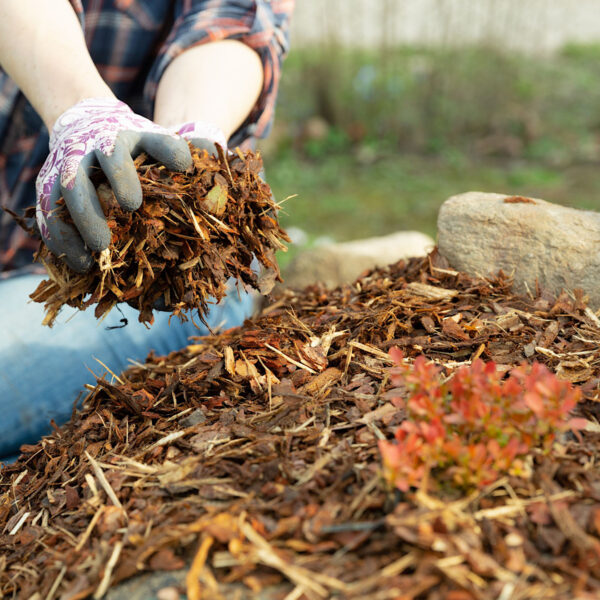
Jump to: What Is Mulch? | Which Plants Need Winter Mulch? | Pros & Cons of Different Types of Mulch | How To Mulch Your Garden | FAQs
This post may contain affiliate links. As an Amazon Associate, I also earn from qualifying purchases. You can read our disclosure information here–
What Is Mulch, Anyway?
Mulch is basically a layer of material (often organic, but not always) placed on top of garden plants and the soil to offer protection from the harsh cold and wind, to help keep moisture in the ground, and to help keep weeds down.
With tomatoes in particular, mulch can also help prevent disease by keeping the soil from splashing back up on the plants.
Landscapers and home gardeners also use mulch for decorative reasons. Typically decorative mulches will be commercial bark chips in a range of colors, as opposed to homemade mulches for protecting the vegetable garden.
In this post, we’re focusing on using mulch to protect food plants during winter. After all, one of the characteristics of most mulch types is that they help insulate the soil, thereby keeping out the worst of the cold.
To summarize, the main advantages of mulching your garden in the Fall include:
- Insluates the soil
- Blocks out weeds
- Enriches soil as it breaks down
- Helps retain moisture
Whether you use mulch over the entire garden depends on your climate and what exactly you grow. Unless you live in a tropical climate, you’ll want to give at least some of your less hardy crops a nice mulch “jacket” to keep them warm during the winter months.
By the way: mulch isn’t the only way to protect plants during winter. I discuss other measures in the post on overwintering potted plants.
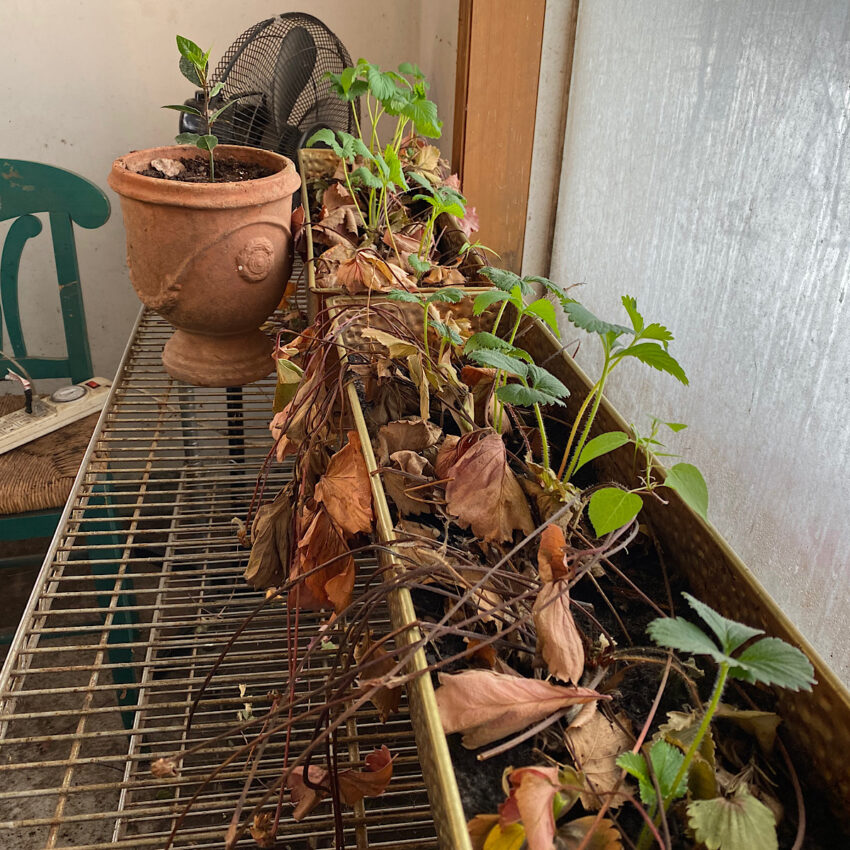
Which Fruits and Vegetables Need Winter Mulch?
Before you cover every square inch of your garden in a thick layer of mulch, consider where it’s actually necessary.
The decision to mulch or not has to do with various factors: your climate, a plant’s hardiness, whether it’s potted, and whether it’s in a sheltered location or exposed to the elements—among many other things.
Here’s how I decide whether to mulch:
- Cold-hardy vegetables or fruits? May not need mulch, but it can protect against deep freezes.
- Tender crops? May prefer to bring indoors, otherwise definitely mulch. I live in Zone 4 and have to follow this method for overwintering my tomatoes.
- Perennial herbs and berry shrubs? Mulch ’em. My blueberry plants outdoors love a good layer of wood chips on the soil for moisture control, for example and my strawberries like a straw mulch for insulation.
- Potted plants? They’re more fragile, so mulch those too or overwinter potted plants inside with these tips.
- Root vegetables? They may not need mulch, but it can make harvesting easier by preventing the soil from freezing solid.
Of course, if your area rarely gets freezes, you may not need to mulch at all, or you can at least use mulch types that don’t offer much in the way of insulation.
Living in Minnesota (Zone 4-5), I find I always need to mulch my strawberry plants and blackberry plants for Winter.
It’s best to do this in late Fall to give them a chance to get as much sunlight as possible before the ground freezes
Here’s what my strawberry beds look like being mulched with straw (those HISEA boots you see are a favorite of mine for Fall work btw).
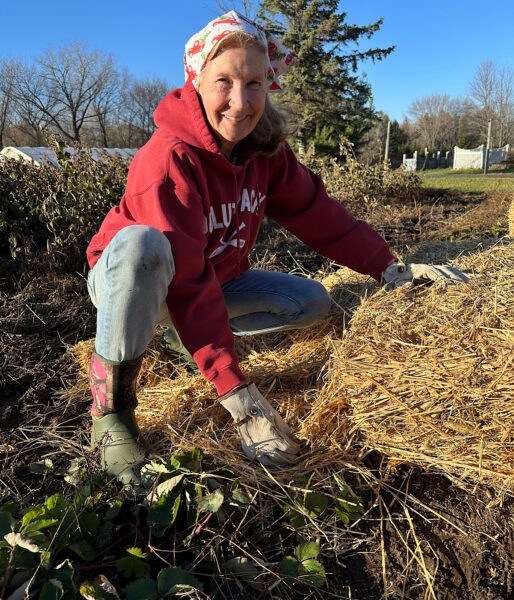
If you live in a place that gets seriously cold, a thicker layer of mulch may be required. You should check down to which USDA Zone your plants are hardy to.
Tip: If you live in a wet climate, keep in mind that it’s best to use a mulch type that doesn’t retain too much moisture. Sensitive plants can contract root rot if the soil is too wet.
Pros and Cons of Different Kinds of Garden Mulch
If you’ve been gardening for a while, you’ll know there are various types of mulch to choose from. They range from free to relatively expensive and all have different pros and cons.
Think about what you’re trying to achieve (insulation, aesthetic, soil enrichment) when making your decision.
Here are the most common types of mulch for winterizing fruit and vegetable plants:
Straw Mulch
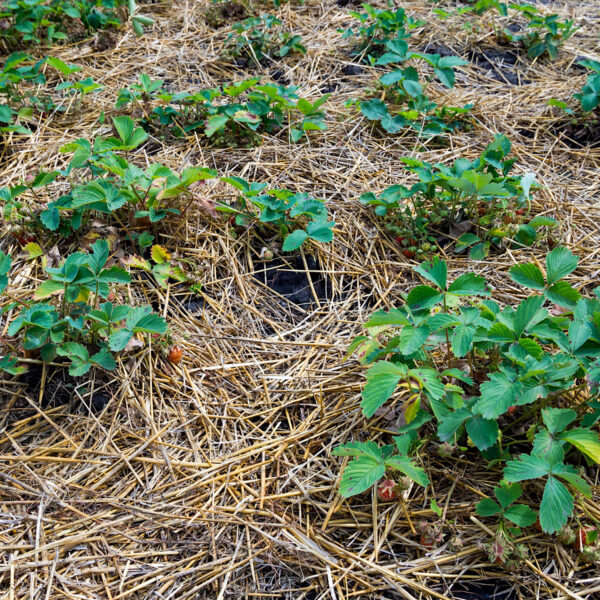
What: Plain old straw or hay (dried grass or grain stalks). One of the most widely used types of mulch, and my preferred option for strawberries and garlic.
Pros:
- excellent for insulation
- easy to apply and remove
- relatively cheap
Cons:
- can blow away in the wind if not watered in
- must find a brand that’s free of weed seeds
- slugs and rodents might harbor in it if not removed in Spring
Plastic

What: A sheet of plastic film, available commercially in different colors and thicknesses.
Pros:
- helps retain soil moisture
- heats the soil quickly in the Spring
- blocks weeds if applied correctly
Cons:
- not environmentally friendly
- weeds often grow through it and it is horrible to get up after that happens
- needs to be anchored down with stakes or bricks and is labor-intensive
- can cause the soil to overheat in Summer if not taken up
Newspaper

What: Old newspapers used to cover the soil around your plants.
Pros:
- free
- helps retain soil moisture
- recyclable
Cons:
- not great at retaining warmth
- can blow away when dried out
- needs to be replaced more often
- not very attractive
Compost
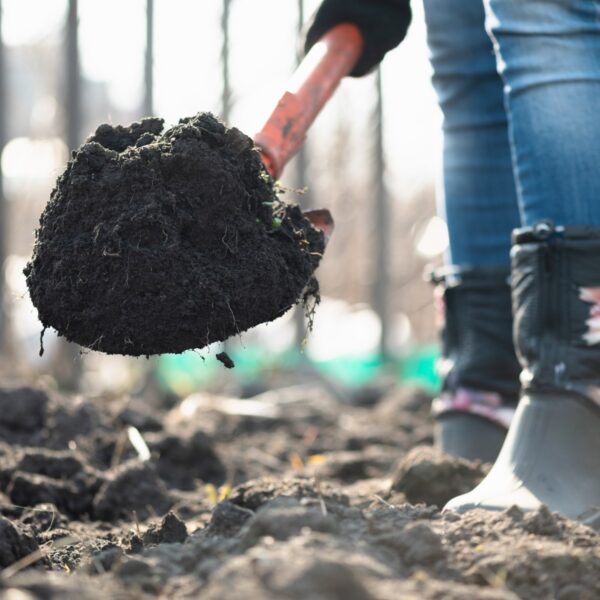
What: Decomposed organic matter, often used to enrich a sandy or clay soil.
Pros:
- adds nutrients to the soil
- improves water retention
- can be homemade for free or purchased in bulk
- good for insulation.
Cons:
- must find compost that is free of seeds
- can be a lot of work to produce in large quantities
Wood Chips

What: Shredded pieces of tree bark, which can be purchased commercially in a range of colors, type,s and size, or received free from local shredders in your neighborhood.
Pros:
- lasts quite long
- visually pleasing
- insulates if applied thickly but allows rain to penetrate
- doesn’t attract as many problematic insects or rodents
Cons:
- can be expensive if bought commercially
- may deplete nitrogen from the soil as it breaks down
- difficult to remove if you want to remove it in Spring
- problematic if you want to till (it shouldn’t be incorporated into the soil)
Leaves
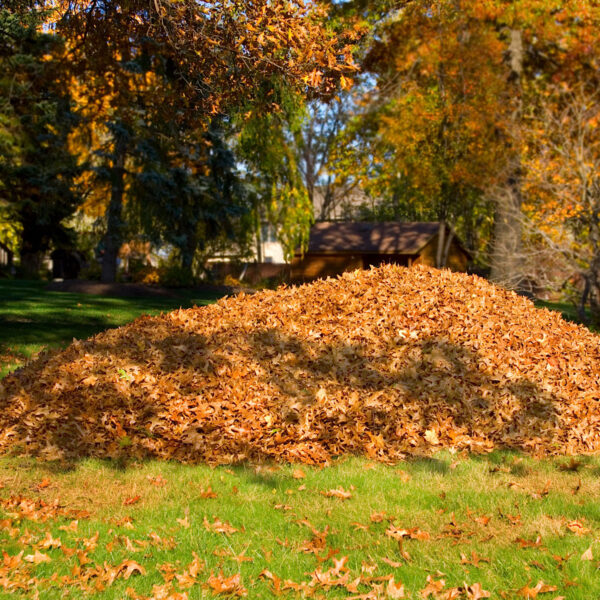
What: Fallen leaves from any tree (except black walnut), sometimes shredded.
Pros:
- great insulator
- free if you have deciduous trees
- can improve soil health in the long run
Cons:
- can become compacted if you use a thick layer and don’t aerate it. preventing rain from penetrating
- would take a lot of leaves if you have a large garden
Pine Needles
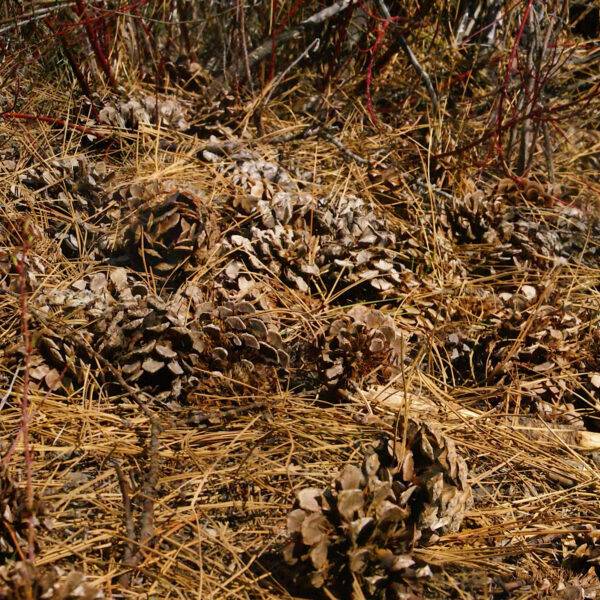
What: Fallen needles from any type of pine tree.
Pros:
- free if you have pine trees
- ideal for plants that like acidic soil
- insulates reasonably well, while still allowing rain to penetrate
Cons:
- Takes a lot of pine needles for enough coverage to insulate.
Homemade or Commercial Compost?
If you have deciduous or pine trees on your property, put those leaves and needles to good use! They keep your plants nice and cozy, improve the soil, and are totally free.
But what if you don’t have leaves galore? Here are some considerations when selecting homemade mulch over store-bought:
- Cost: Homemade mulch is almost always cheaper than store-bought.
- Effort: Making your own mulch means you have to spend time trimming, chopping, or grinding material. Compost especially takes a good bit of time and work to produce.
- Availability: If you’re looking for a specific type of mulch, store-bought might be best. You can choose very particular materials, like cocoa husks or pine bark.
- Quality: You know exactly what goes into your homemade mulch. With store-bought mulch, you have to make sure you buy a trusted brand. You don’t want material with seeds or pests mixed in!
- Volume: If your garden is large, you may not have a choice but to buy part of your mulch. Producing enough yourself isn’t always feasible.
- Appearance: Homemade mulch often ends up looking a bit messier than many store-bought types.
- Environment: Making your own mulch is a more environmentally friendly option than buying.
How To Mulch Your Garden
So you’ve decided whether to mulch or not and have managed to pick a type of mulch that works for your goals? Great! Time to get started.
The process is pretty straightforward:
- Clear the area of any debris and trim grass or cover plants.
- Apply a layer of mulch, usually between 2-4″ depending on material, climate, and the plant’s needs. With woody plants, don’t crowd the stem in mulch. Give it some space!
- Make sure the mulch is evenly spread and touching the soil. You can water a bit to help the mulch settle.
- Maintain the mulch layer by fluffing it every few weeks. This prevents compaction, which can block water from reaching your plants’ roots.
Tip: With mulch types that can blow away, like straw, you can keep things in place by temporarily securing some burlap on top. Once it has settled a bit, it won’t be so prone to ending up all over the place.
Mulching FAQs
Unless they’re tender plants and you’re planning on keeping them in a chilly area like a garage, there’s usually no need.
There’s no quick and easy rule of thumb, but generally speaking, I’d use 2″ for mild conditions, up to 4″ for normal winters, and all the way up to 8″ if you expect very harsh weather. Your mileage may very depending on mulch type and other factors.
This depends a bit. For example, I do remove most of the straw mulch from my strawberries in spring so the sun can reach them and to prevent giving pests a comfy home. I don’t remove bark chips from my potted plants, because it looks nice. If you’re in doubt, you could consider reducing the mulch layer and see how your plants fare.
Don’t forget to prune plants that need it! Many woody plants benefit from being cut back a little (or even a lot) around the end of the growing season.
**Want more like this? Subscribe to our Sunday newsletter to get recipes, gardening guides, and diet help. Let’s go from Inspiration to Done!

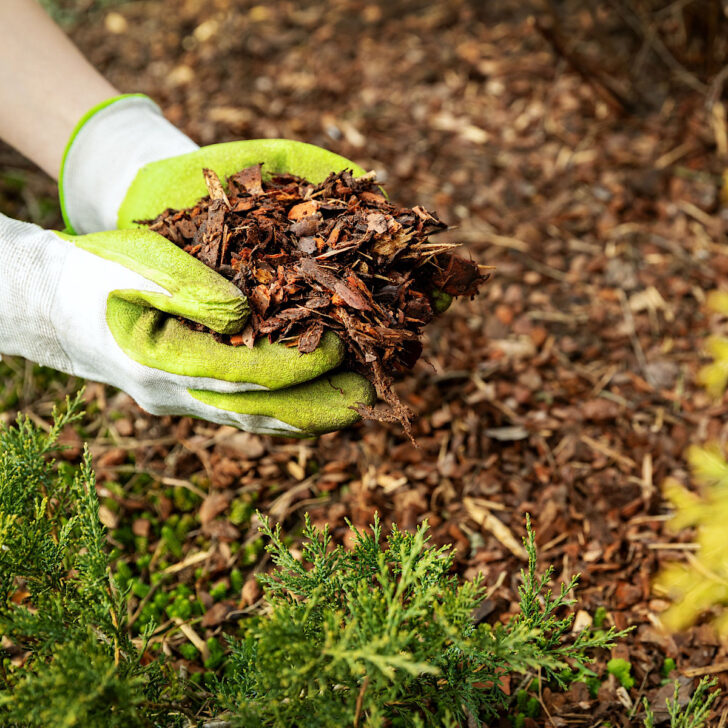
Leave a comment